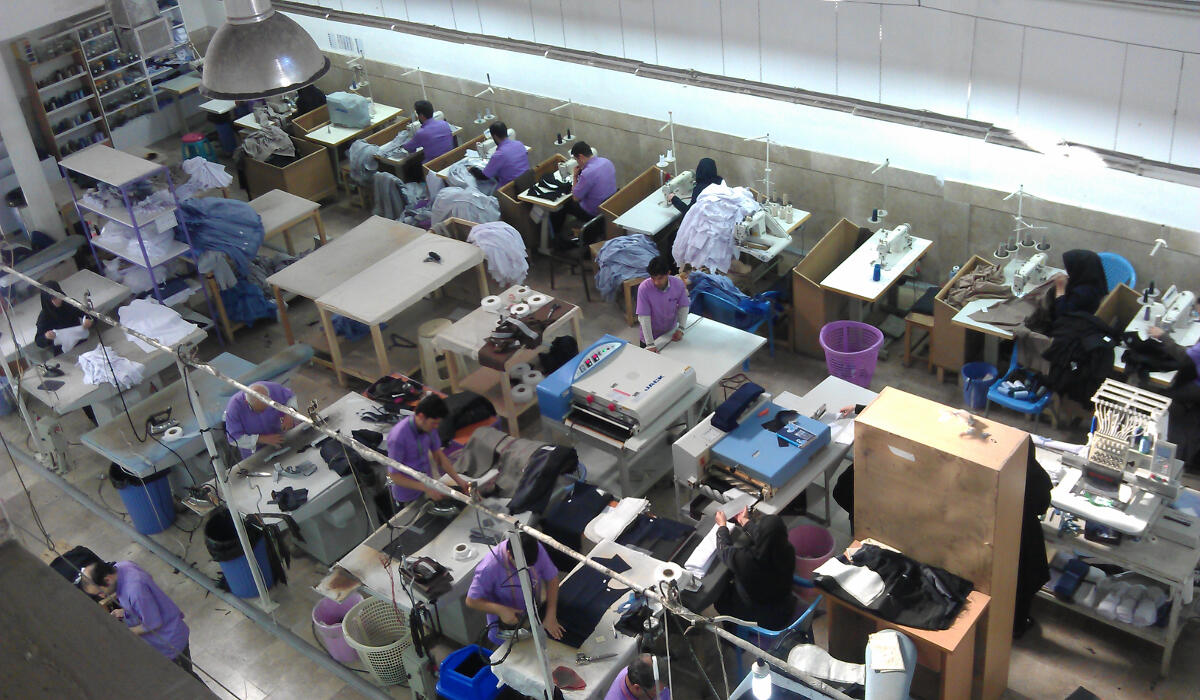The dominance of foreign brands in Iran’s apparel market, mostly through smuggling, has undermined domestic production over the years.
In the hope of boosting domestic production and bringing about effective changes in the apparel industry, the Fifth International Apparel Exhibition, also known as IRAN MODE 2017, opened on Monday and will run through Thursday.
At the exhibition’s venue, Tehran’s International Permanent Fairgrounds, Financial Tribune interviewed Amin Moqaddam, a member of the board of directors of Iran Textile Exporters and Manufacturers Association.
Moqaddam, who is also the treasurer of the association, said there have been promising developments in the Iranian clothing industry over the last two years.
“The quality of raw materials, textiles to be more specific, has improved over the years, as designers have grown more conscious about fashion trends. I believe Iranian apparel producers today are able to produce and offer clothing for different tastes in various styles,” he said.
The official said many garment manufacturers have gone out of business due to the staggering rate of smuggling, but producers who were willing to face the challenge enhanced the quality of their products to survive and thrive.
According to Moqaddam, currently Iranian apparel production meets less than 30% of domestic demand, but he believes Iranian producers have the capacity to increase the share to 70%.
“On average, each Iranian buys two items of clothing per year, because of which demand for textiles in the country stands at 160 million meters per year,” he said.
Stained by Smuggling
The official said the government puts illegal apparel imports at $2.5 billion per year, but the real figure is more than double this amount.
“The huge volume of foreign clothes smuggled into the country has had a detrimental effect on domestic producers,” he said.
The abundance of foreign brands, which flaunt cheaper price tags, has eroded the competitiveness of domestic producers, as renowned foreign brands employ strong advertisement campaigns worldwide.
Moqaddam put the value of Iran’s apparel market at $11 billion.
“Apparel imports should not be stopped altogether, but they need to be properly managed since moderate imports can give rise to positive competition and push producers to improve their products,” he said.
Moqaddam noted that the clothing industry is the cheapest job-creating industry in Iran.
“For each job in the textile industry, an investment of 350 million rials ($9,025) is needed while it takes $2 million to create one job in the petrochemical industry,” he said, stressing that the Iranian textile industry has the highest job creation potential after oil industry.
The official said at least 750,000 people are directly involved in the apparel industry.
As an initiative to create more jobs in this field, Industries, Mining and Trade Minister Mohammad Shariatmadari and the head of Planning and Budget Organization, Mohammad Baqer Nobakht, signed a memorandum of understanding on Monday for promoting rural employment under the framework of “apparel production in rural regions”, IRNA reported.
The imitative is aimed at creating 5,480 jobs in rural regions in the provinces of Ardabil, Chaharmahal-Bakhtiari, Kermanshah and Hamedan.
Garment manufacturing facilities in Iran are outdated due to the inability to import the latest equipment because of different reasons, including lack of financial resources and years of international sanctions imposed on Iranian industries over its nuclear program.
“Many of the equipment used in this industry are over 40 years old,” he said, adding that renovating the equipment used in the apparel industry and technology transfer are top priorities.
Boosting Trade
Iran exported 3,800 tons of apparel worth $46.2 million in the last fiscal year (March 2016-17), up 2.6% in volume and 3.9% in value when compared to the previous year, Iran’s Chamber of Commerce, Industries, Mines and Agriculture’s news portal announced.
Boosting exports calls for promoting domestic production first. For this, authorities plan to set up new industrial towns with the aim of strengthening domestic production chains.
New apparel industrial towns in Fashafouyeh, located in Tehran Province’s Rey County, and another across from Tehran’s Imam Khomeini International Airport are among major projects.
Moqaddam considered the measures to set up new apparel industrial parks in the country as important steps for promoting this industry.
“Industrial estates would lead to considerable reduction in production costs, as different fields operating in the clothing industry could be centralized and the role of middlemen would be diminished,” he concluded.



